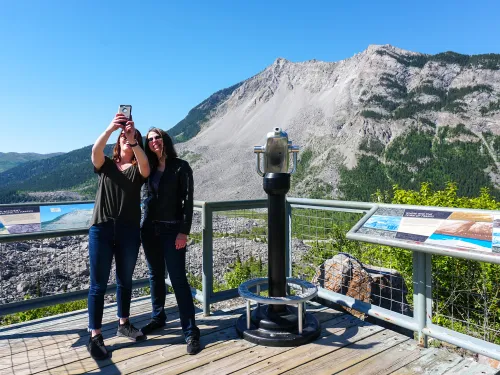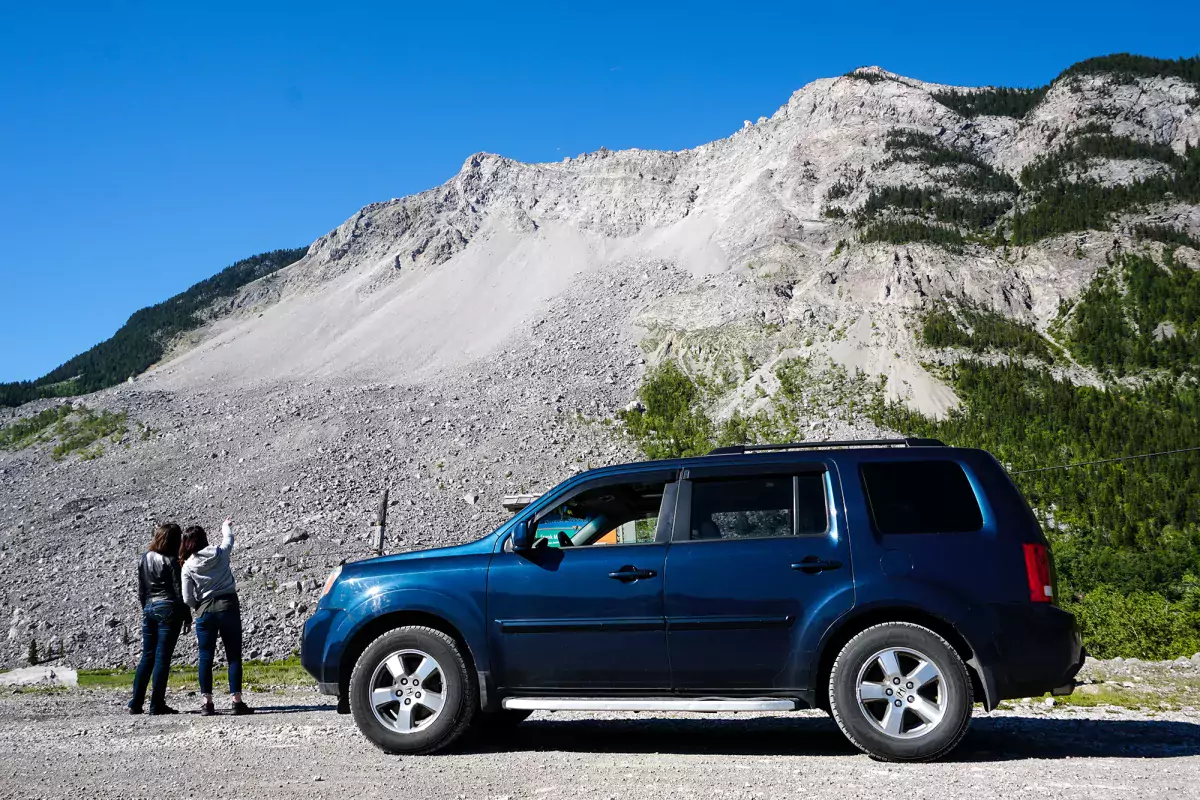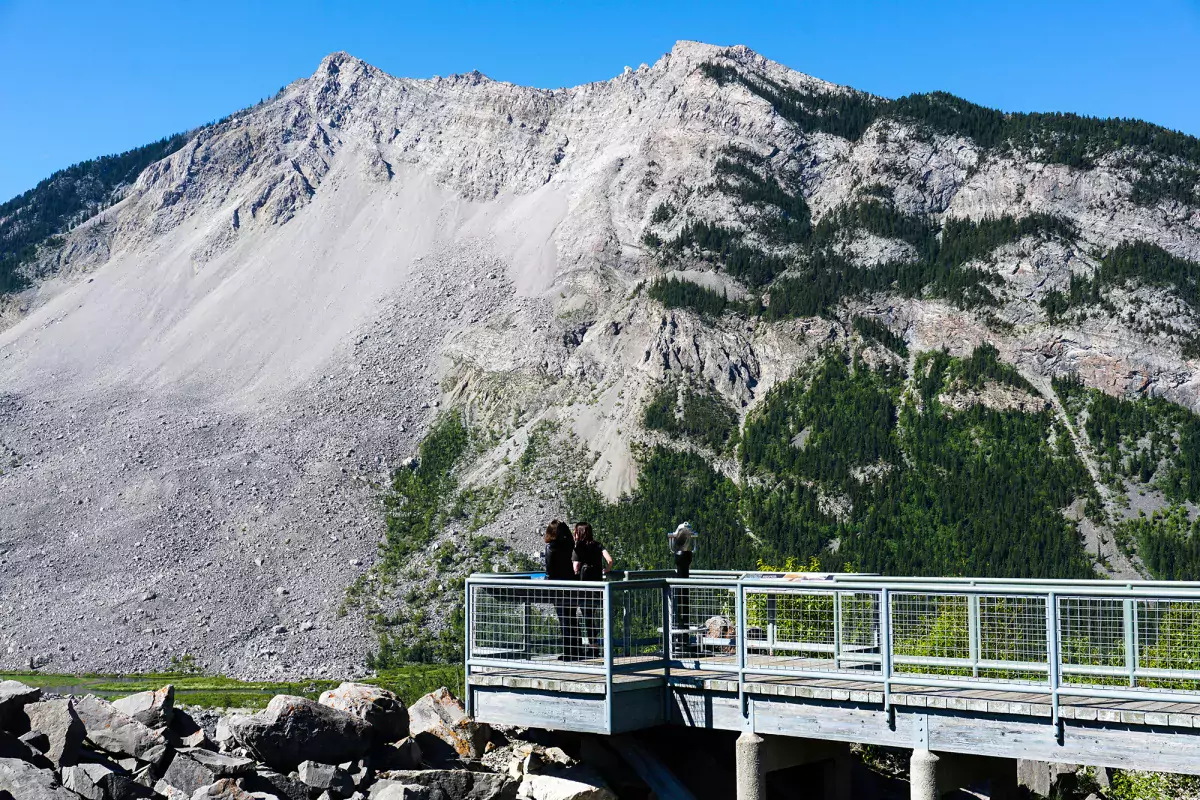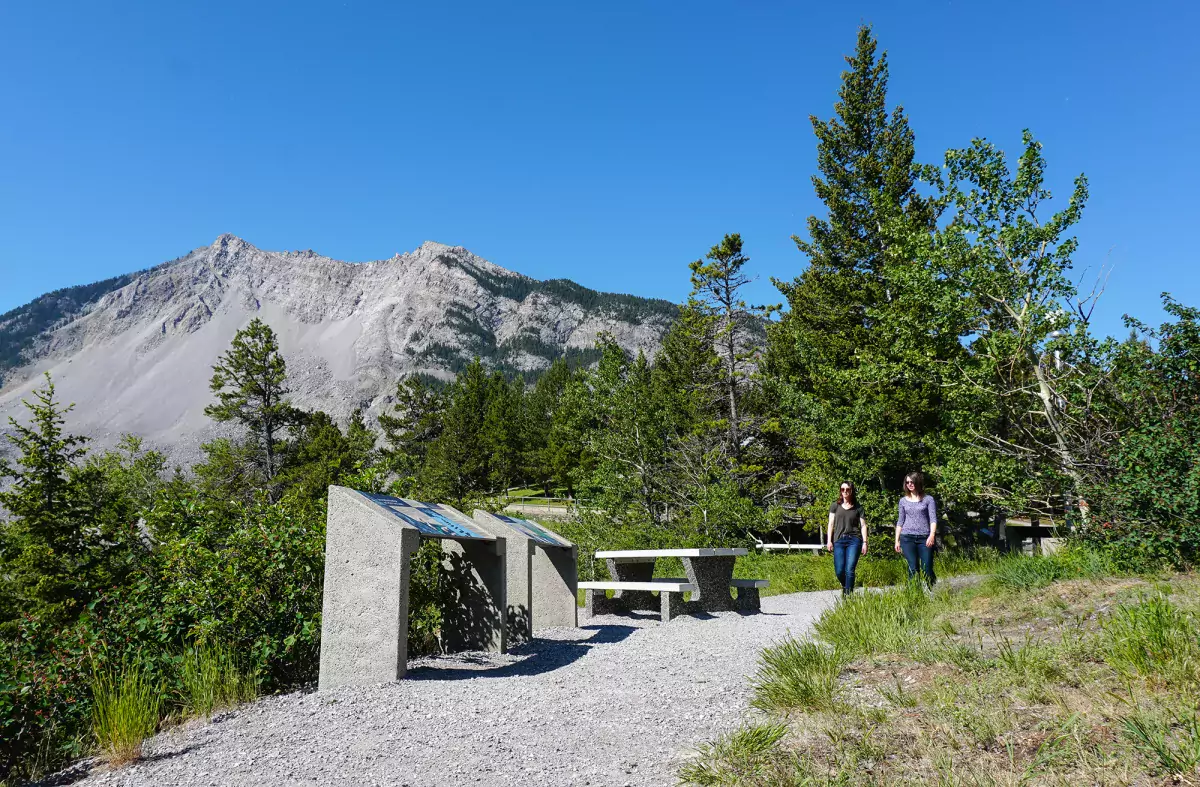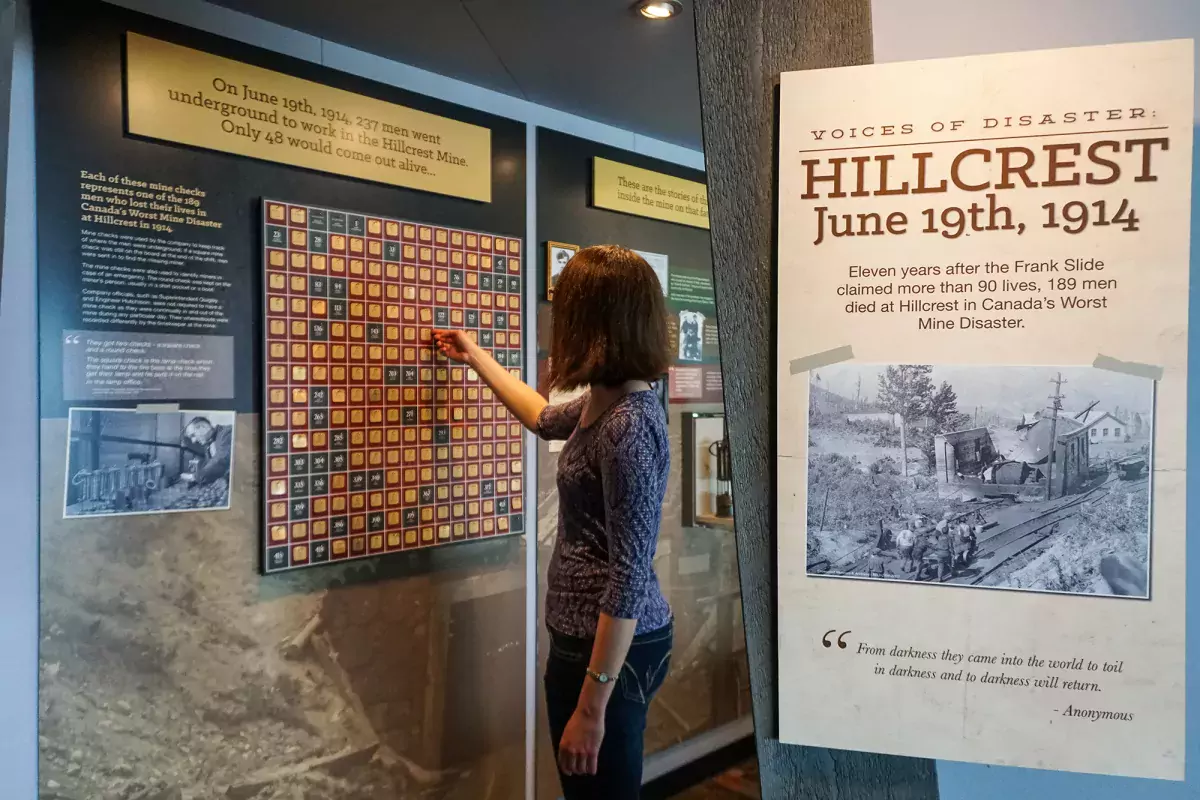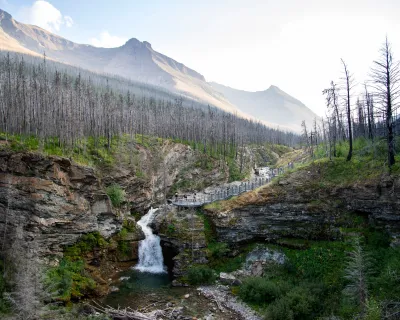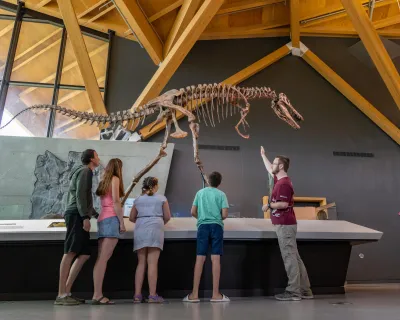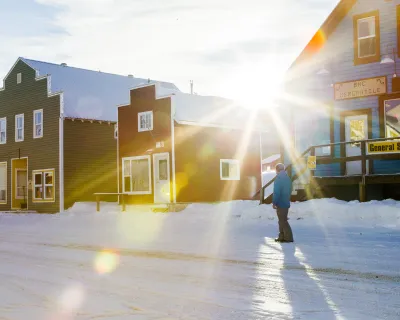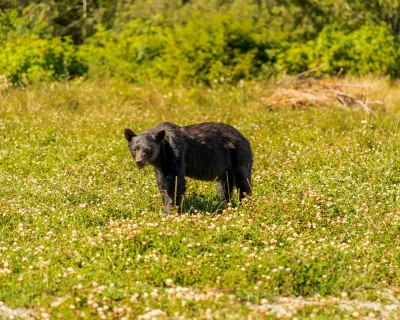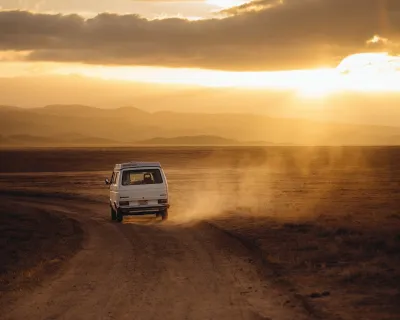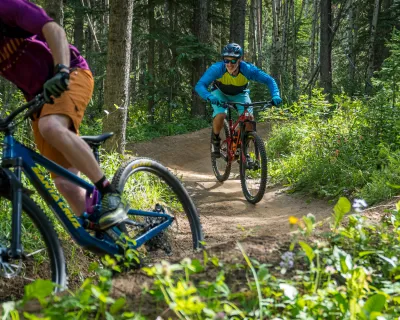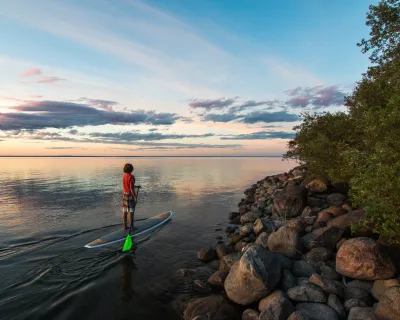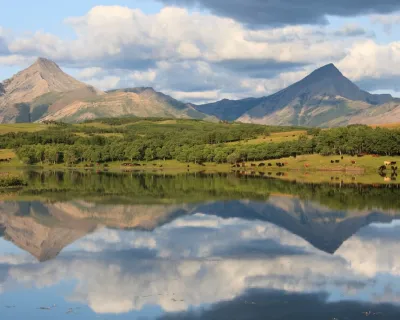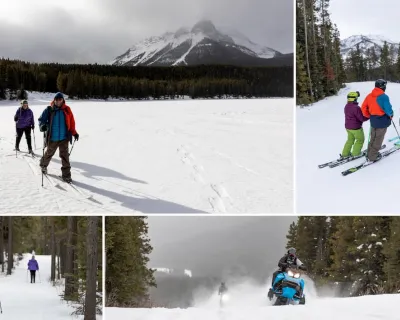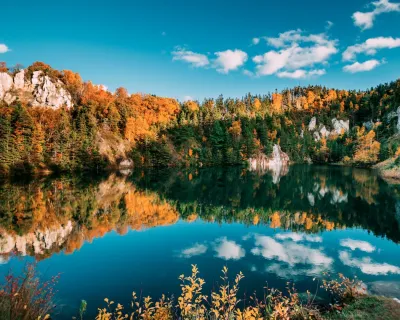Come eye to eye with the power of nature at Frank Slide
Seeing Canada's deadliest landslide site a humbling experience
A ZenSeekers' road trip isn't complete unless the destinations include outdoor adventures, and culinary, learning and cultural experiences. During summer 2018, create your #BucketlistAB itinerary in Southern Alberta and come and stay a night and see a sight.
Matthew Bailey
Words can hardly describe the moment I came upon the vast destruction caused by Frank Slide. Driving from Pincher Creek, we passed green fields, wind turbines, and mountains. Everything was neat and intact. But as we approached the town of Frank, a massive landscape of rubble lay on both sides of the highway and carried on for as far as we could see.
Looking through the windshield, we could see the mountain that gave way, a brief moment in history that became Canada's deadliest landslide.
Enjoying one of the many scenic and informative stops along the Frank “Drive Through The Slide” route.
At the beginning of the 1900s, Frank was a thriving mining town situated at the bottom of Turtle Mountain, near Crowsnest Pass. Some even thought it would become the Pittsburgh of Canada, referring to that large American steel-making city. However, that all changed the morning of April 29, 1903, when the mountain came tumbling down, covering up more than three square kilometres of the valley bottom and killing more than 90 people. The name Turtle Mountain came from the First Nations people who warned the locals that the mountain was slowly moving. But, the pioneers didn't listen, and with riches to be found, continued with mining and exploration.
Check out our ZenSeekers’ story about cycling the new trails of Crowsnest Pass.
Getting an incredible look at the devastating landslide that forever changed the town of Frank.
Today, it has become a star tourist attraction, bringing in thousands of people from all over the world. There's an impressive interpretive centre that teaches visitors all about the history of Frank, as well as various walking trails that take people through the rubble. There's also "Drive Through the Slide," a free self-driving tour that brings visitors up close with Turtle Mountain and seven points of interest along the way. Before embarking on the drive, we picked up a pamphlet that details the area we'd be driving through. However, there are also signs along the way that give information on where you are and why it's significant.
One of the stops that really stood out for me was Stop #2, which is titled "On the Edge of Disaster. This is the area closest to the landslide where you could have been standing and not have been hurt. I found it so incredible to think that someone could have been standing in this very spot back in 1903 and had Canada's second-biggest landslide go right by them, taking out houses and ranches but leaving them without a scratch. Then, at Stop #3, we were standing near the original Manitoba Avenue, which is where many of the miners' cottages were located. This was also the location where they found the remains of a house with several skeletons inside. Stories like this make you think about the lost lives and the immense destruction this landslide caused.
Checking out one of the trails that start from Frank Slide Interpretative Centre.
With blue skies overhead, we stood outside the vehicle, standing on what used to be the top of Turtle Mountain. In front of us was Turtle Mountain itself, with part of it missing. Behind us were hundreds of massive boulders along the main highway, followed by kilometres of fallen rocks – about 90 million tons worth.
As I looked around at the scenery, I couldn't help but realize how small we really are. How can you not when you're surrounded not only by gigantic mountains but also by fragments of that mountain, many of which are bigger than my vehicle.
Frank Slide is truly impressive. It's beautiful, rugged, and a big part of Alberta's history. This is one of those sites that should be on everyone's bucket list.
If You Go
Frank Slide is around two and a half hours south of Calgary on Highway 22, the Cowboy Trail.
Grab an awesome itinerary and start your Southern Alberta adventure.
“Hit the Trail” and explore Crowsnest Pass. Learn more here.
Want a truly awesome dining experience in Crowsnest Pass? Read our story here.
Learn more about our ZenSeekers #BucketlistAB expedition by checking into our official website
Like Our Facebook Page
